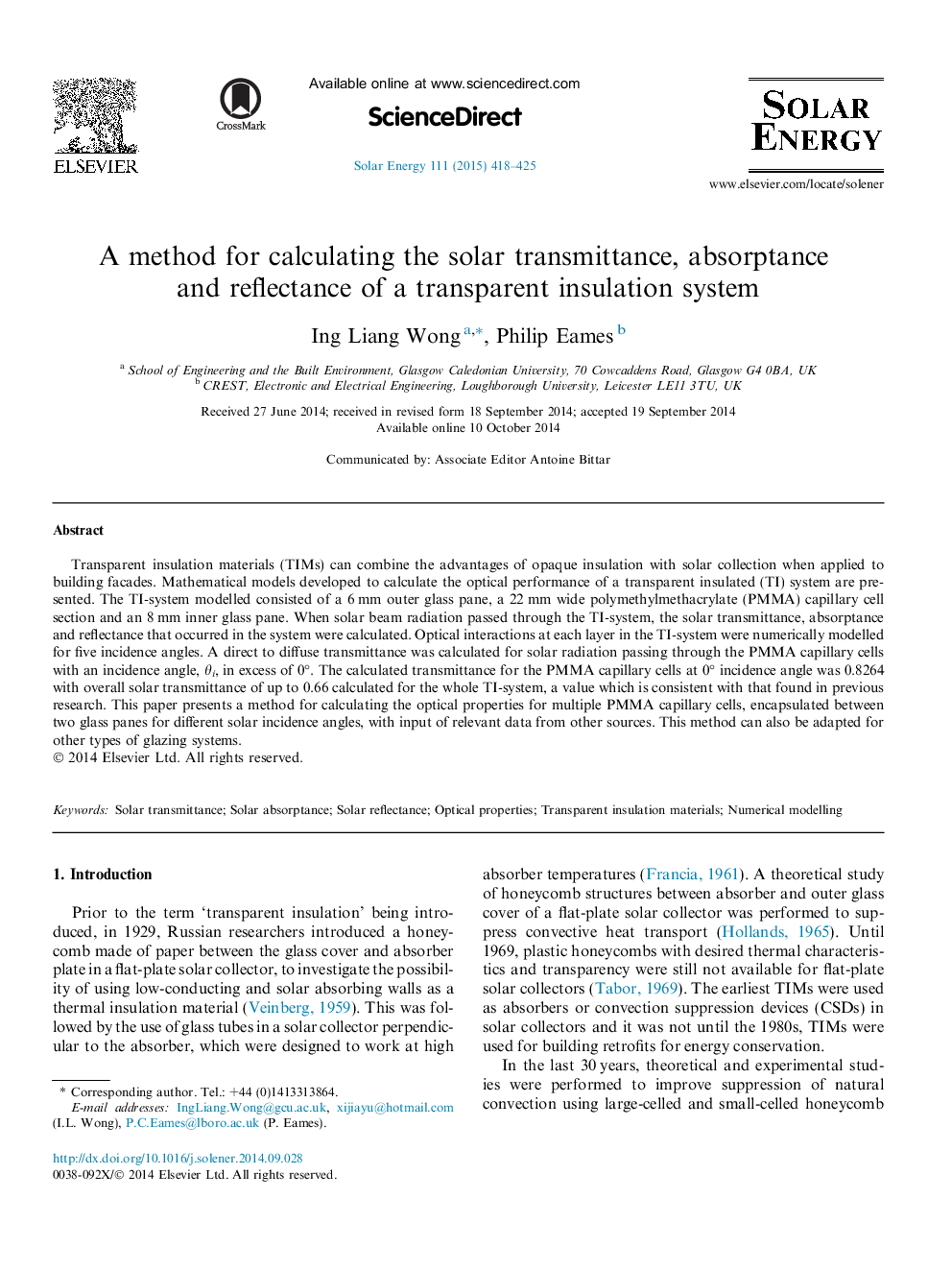| کد مقاله | کد نشریه | سال انتشار | مقاله انگلیسی | نسخه تمام متن |
|---|---|---|---|---|
| 1549826 | 1513107 | 2015 | 8 صفحه PDF | دانلود رایگان |
• Modelling of optical performance of a transparent insulated system is presented.
• The models can apply to TIM and encapsulated glass panes at any incidence angle.
• Solar transmittance, absorptance and reflectance occurred in each layer calculated.
• The models are capable of calculating optical properties at each layer in the system.
• Transmittance of up to 69% was calculated for whole system at 0° incidence angle.
Transparent insulation materials (TIMs) can combine the advantages of opaque insulation with solar collection when applied to building facades. Mathematical models developed to calculate the optical performance of a transparent insulated (TI) system are presented. The TI-system modelled consisted of a 6 mm outer glass pane, a 22 mm wide polymethylmethacrylate (PMMA) capillary cell section and an 8 mm inner glass pane. When solar beam radiation passed through the TI-system, the solar transmittance, absorptance and reflectance that occurred in the system were calculated. Optical interactions at each layer in the TI-system were numerically modelled for five incidence angles. A direct to diffuse transmittance was calculated for solar radiation passing through the PMMA capillary cells with an incidence angle, θi, in excess of 0°. The calculated transmittance for the PMMA capillary cells at 0° incidence angle was 0.8264 with overall solar transmittance of up to 0.66 calculated for the whole TI-system, a value which is consistent with that found in previous research. This paper presents a method for calculating the optical properties for multiple PMMA capillary cells, encapsulated between two glass panes for different solar incidence angles, with input of relevant data from other sources. This method can also be adapted for other types of glazing systems.
Journal: Solar Energy - Volume 111, January 2015, Pages 418–425
